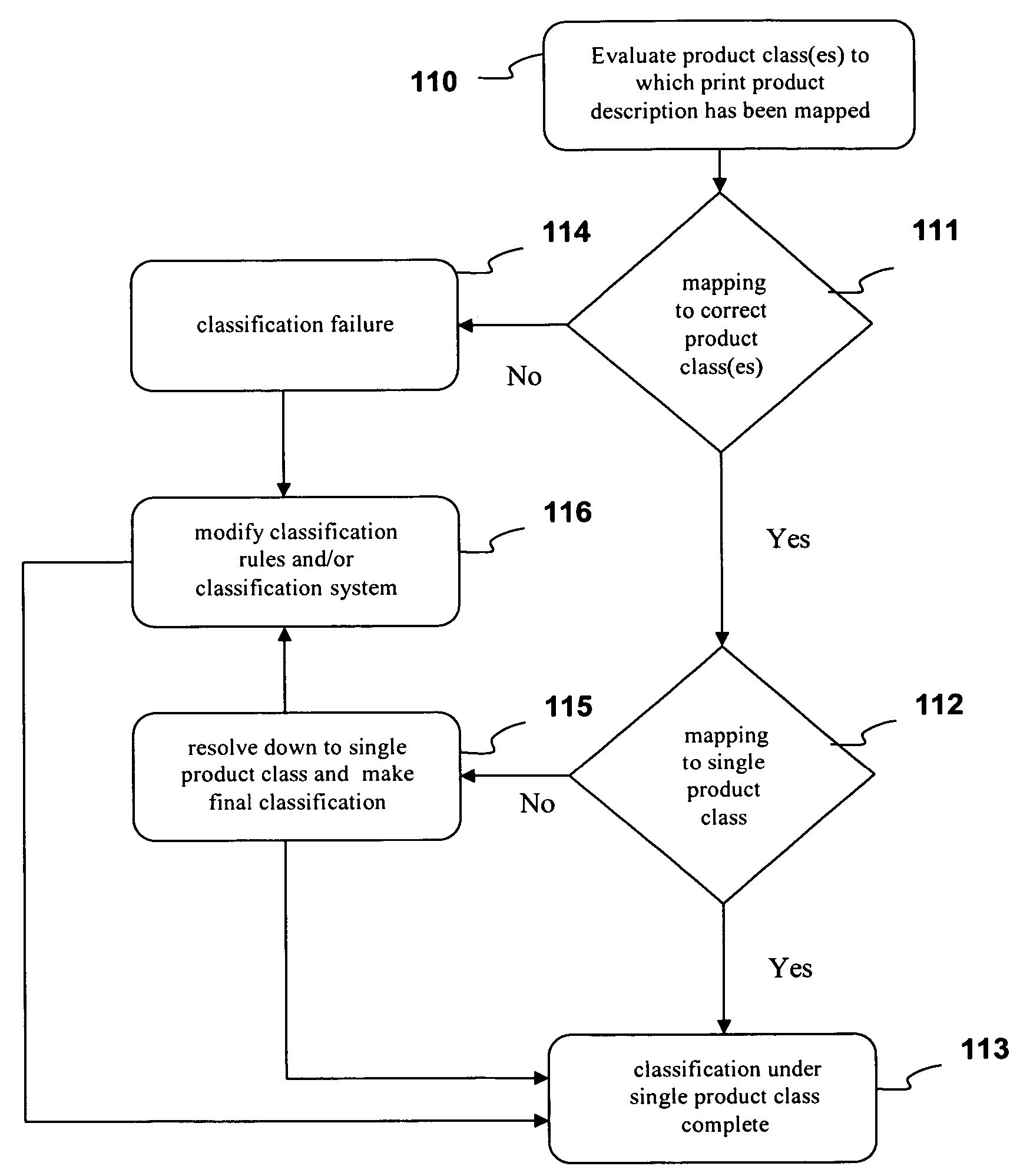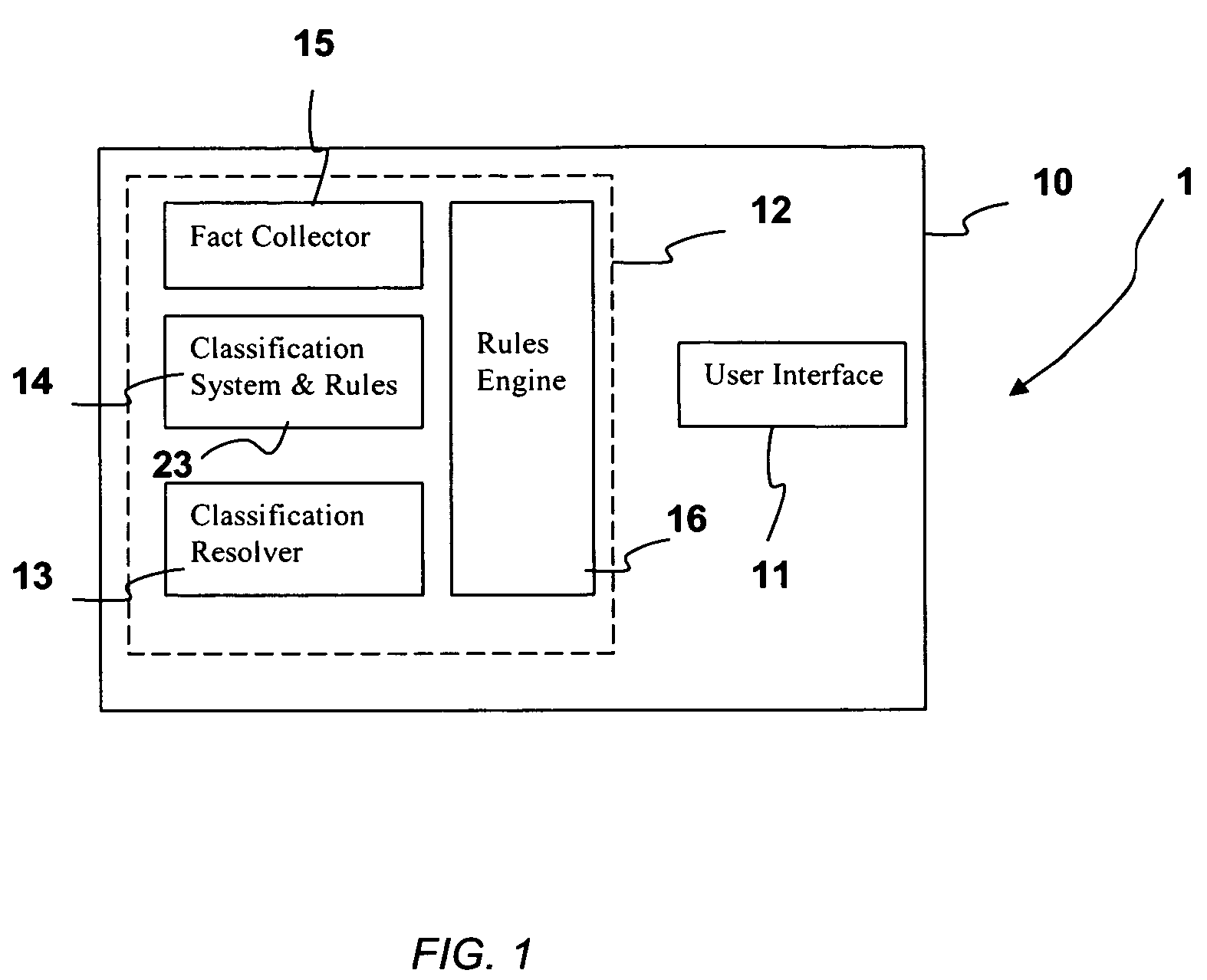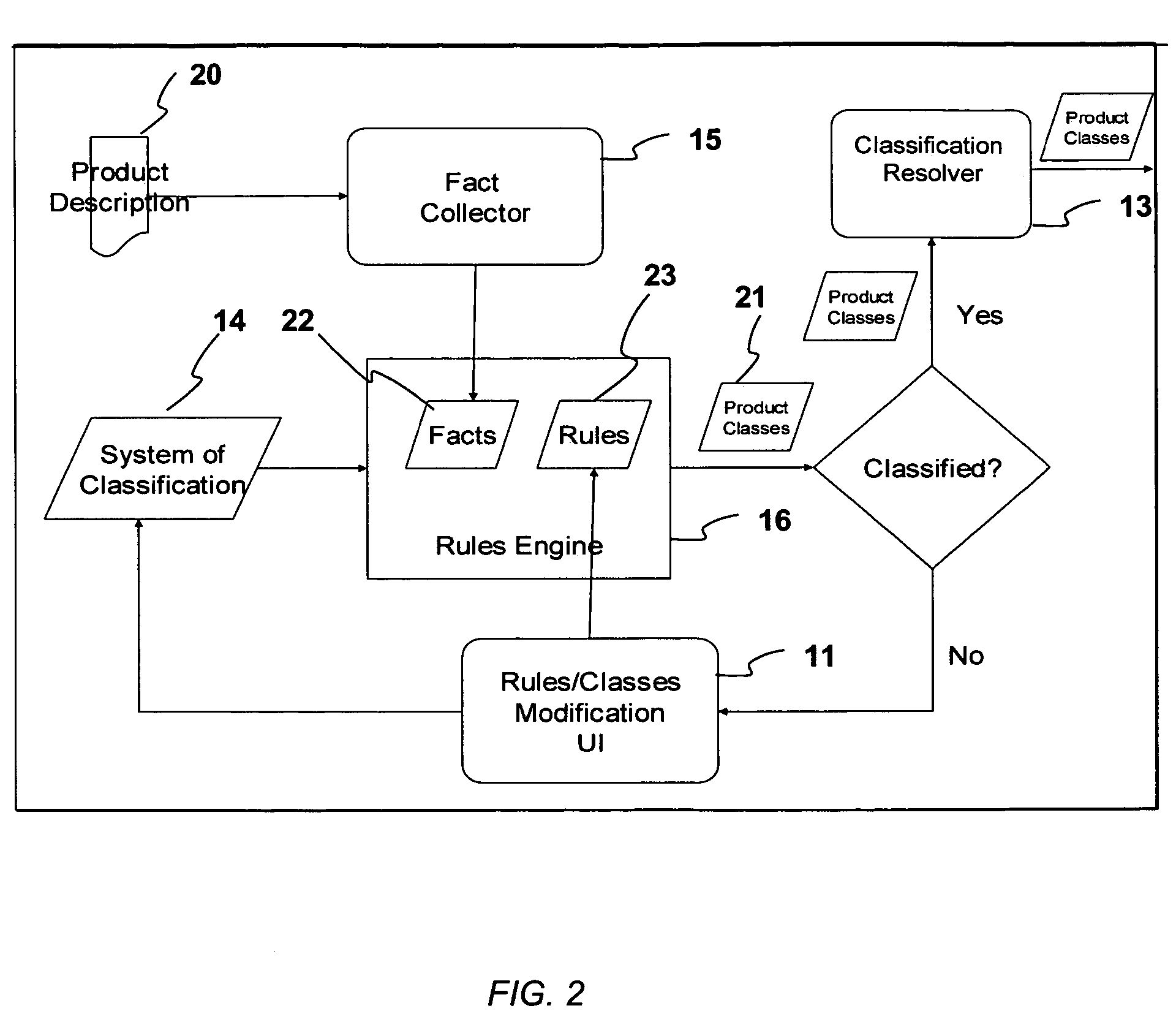Method and system for classifying print product descriptions
a technology of product descriptions and classification methods, applied in the field of production printing, can solve the problems of inefficient and time-consuming classification of print product descriptions, difficult task and easy to error, and manual classification is more difficult, so as to reduce pre-press labor time, reduce the amount of pre-press time, and cost-effective
- Summary
- Abstract
- Description
- Claims
- Application Information
AI Technical Summary
Benefits of technology
Problems solved by technology
Method used
Image
Examples
Embodiment Construction
[0022]The illustrative embodiment provides an approach to classifying descriptions of a print product, as provided by a customer of a print shop, into a print shop vocabulary (ontology) used for communicating between the product and process so as to translate the print product description to a workflow more effectively.
[0023]For the purposes of discussion hereinafter, a“print shop” refers to a grouping of printing resources. The print shop may be a freestanding entity such as a commercial printer or may be part of a corporation or other entity. A “print product” is any product or logical unit of work produced by a print job. For example, a print product can be a booklet, a brochure or a single document. A “print job” refers to work that is to be completed for a customer so as to provide the print product. For example, a request to make 10 copies of a book is a print job. Similarly, a request to make 100 copies of a single document is a print job.
[0024]Referring to FIG. 1 of the acco...
PUM
 Login to View More
Login to View More Abstract
Description
Claims
Application Information
 Login to View More
Login to View More - R&D
- Intellectual Property
- Life Sciences
- Materials
- Tech Scout
- Unparalleled Data Quality
- Higher Quality Content
- 60% Fewer Hallucinations
Browse by: Latest US Patents, China's latest patents, Technical Efficacy Thesaurus, Application Domain, Technology Topic, Popular Technical Reports.
© 2025 PatSnap. All rights reserved.Legal|Privacy policy|Modern Slavery Act Transparency Statement|Sitemap|About US| Contact US: help@patsnap.com



